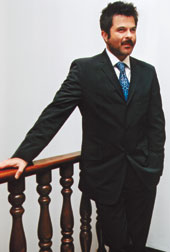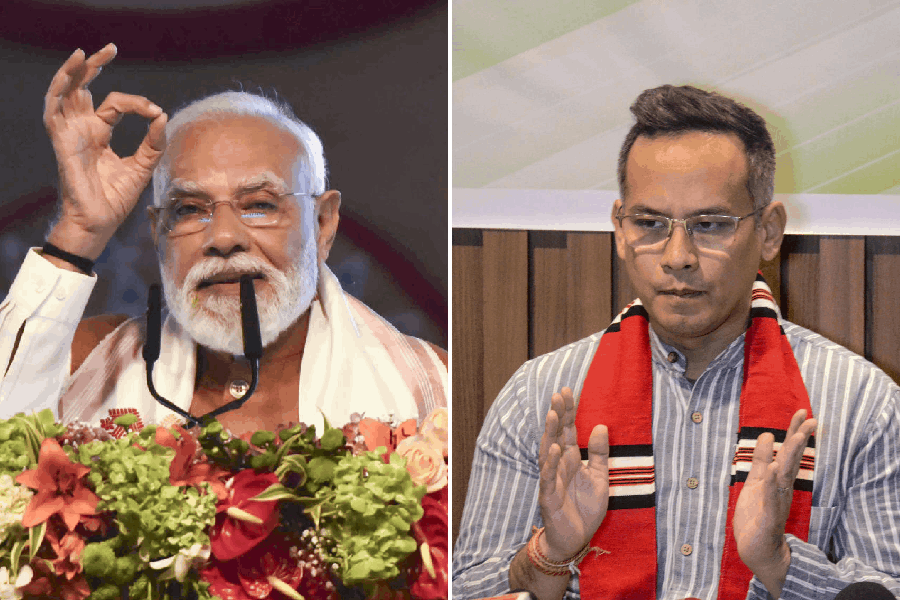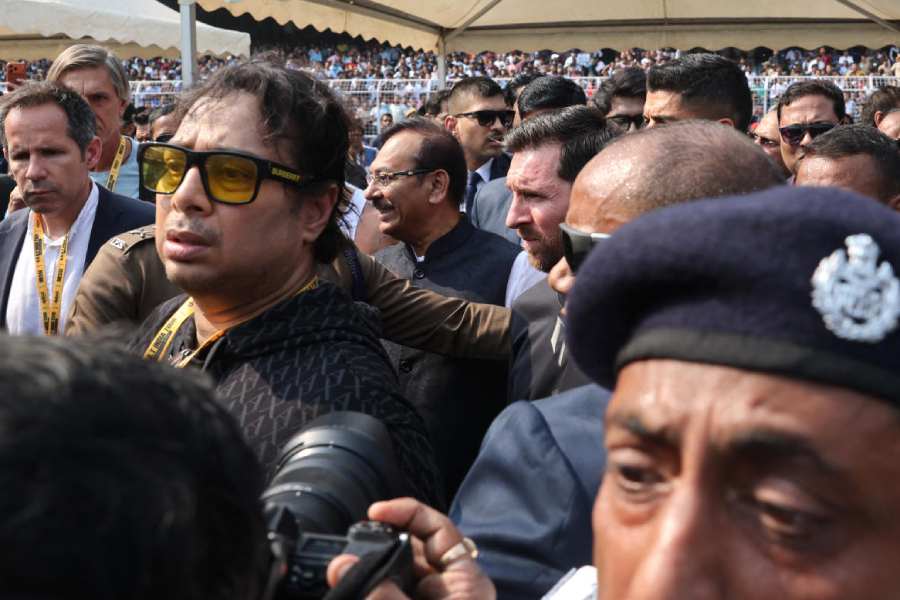 |
Anil Kapoor has always been a high-stakes gambler. Now he has rolled the dice once again by working on slightly offbeat movies with young directors. The box-office returns are still being counted but the critics seem to like his efforts in Chocolate, which released last Friday and My Wife’s Murder. Says Kapoor, “I have struggled so much that after all these years in the industry, I was averse to working under rookies. But Vivek Agnihotri of Chocolate and Jijy Philips of My Wife’s Murder have both proved otherwise.”
The actor is smartly turned out in a tuxedo and sports a day-old stubble and his thick locks have a stylish new cut. It’s a look he carries off in his latest release Chocolate in which he plays a dapper criminal lawyer, Krishna, who revels in the glory of every victory and indulges news-hungry reporters.
But he plays down talk about a new look. “Instead of focusing on my look, I concentrate on the character I portray. I’ve done this before for films like Lamhe, but then I didn’t wax eloquent about it or go for so much publicity. But times change and you’ve got to move on,” he says.
Kapoor is bouncing back after a long, dry spell. Besides Chocolate, he has also been making waves with No Entry (produced by Boney Kapoor) and My Wife’s Murder (co-produced by Ram Gopal Varma and Kapoor himself). In each of the films, he plays very different roles. In one, he’s a spouse-killer on the run. And in No Entry, he takes part in a comic caper as a husband trying to allay the suspicions of a paranoid wife.
Kapoor will go to any length to get under a character’s skin. So, in My Wife’s Murder, in which he plays a middle-class husband, he rode to the sets on a cycle ? followed by his Mercedes. He even used the grubby bathrooms used by ordinary cast and crew. So in the long run, Kapoor can vouch for the fact that he has done it all. “When someone asks me about growing my hair, quite the trend today, I say I’ve done it already in Virasat,” he says.
In many ways, Kapoor is a trendsetter. For a start, he isn’t the stereotypical Hindi film hero and as he says himself has “eyes that are too small and a head that is too big”. “I was told that a muchiwala hero doesn’t work and to try out bit roles,” he says. So he started out with small roles in 1978 in films like Hamare Tumhare and Ek Baar Kaho.
In 1982, Ramesh Sippy’s film Shakti in its opening scene had an old, frail-looking Dilip Kumar with his daughter-in-law, played by the late Smita Patel, waiting at the train station. Stepping off the train was a young, baby-faced moustached man with a stubble and barely 24 years of age. Anil Kapoor had arrived. In his first major film, he starred with the two giants of Hindi cinema, Dilip Kumar and Amitabh Bachchan.
But it was the following year with Bapu’s Woh Saat Din that Kapoor shot to fame. He played the role of a village bumpkin, for which he went to a roadside barber and got his hair chopped off. The reactions were not flattering. “I was told I looked stupid and that I didn’t look like a hero. But the audience related to the character. That’s the way my journey started. Till today, I have not approached a role as a hero. I let the character become the hero,” he says.
That was followed by a lean phase. Kapoor’s next few films performed averagely at the box-office. Then came Subhash Ghai’s epic Karma and the following year in 1986, he delivered one of the decade’s biggest hits with Shekhar Kapur’s Mr India.
In 1989, Tezaab worked its magic for Kapoor. His Munna characterisation earned him a place at the top. The hits continued to flow with films like Subhash Ghai’s Ram Lakhan (1989), Rakesh Roshan’s Kishan Kanhaiya (1990), and Yash Chopra’s Lamhe in 1991 (a film that introduced Kapoor without his trademark moustache). Yet the 90s saw a transitional period in the film industry when the Khans ? Aamir, Salman and Shah Rukh ? arrived and wooed audiences with the love story formula.
Most movie industry folk predicted that Kapoor’s reign had ended. But he defied them all when he took on the lead role in Vidhu Vinod Chopra’s magnum opus, 1942 ? A Love Story, opposite Manisha Koirala and veteran British actor Brian Glover. After the memorable role as Naren, he held fort with power-packed performances in films like Priyadarshan’s Virasat (1997), Raj Kanwar’s Judaai (1997), and Rajkumar Santoshi’s political drama Pukar (1999), for which he received a National Award.
But after all these years, the role Kapoor identifies with is Saheb in the family-oriented film of the same name. “I too was from a lower middle-class family and wanted to do something for my parents and brothers. I began my career thinking about them, not myself,” he explains. His father Surinder Kapoor was secretary to Shammi Kapoor as also a producer and film distributor. But he wasn’t successful and lost a lot of money. Frustrated by watching his father’s struggles, Anil Kapoor yearned to become an actor.
So one day he ran away from school and auditioned for a role. “I was in Class VII. I passed the audition and then told my parents. They were happy for me. Only today, my mum keeps complaining about my look,” he grins.
Forty-plus he might be, but there isn’t any place for grey hair and wrinkles here. “When you go for quick money and quick success, you don’t feel like you’re answerable to people. But if you feel you owe it to people who pay money to watch you, you have to look after yourself,” he says as he asks for a smoke. And adds: “Don’t write about this. My wife will kill me. Today is my last day.”
It’s been a roller-coaster ride from Woh Saat Din to Chocolate. Says Kapoor, “I’ve read somewhere that my careergraph has been uneven like the heart beats that appear on a cardiogram.”
As he settles down to a meal of a sandwich, fries and Diet Pepsi, he parries queries about his forthcoming projects. “We’ll talk about them when they happen,” he says. “But, yes I am off to London to promote Team India for the A1 Grand Prix, and I’m excited about it. India always succeeds where there is skill, be it shooting, archery or even driving. It takes time but I am sure we will get there.”
Photograph by Rupinder Sharma











